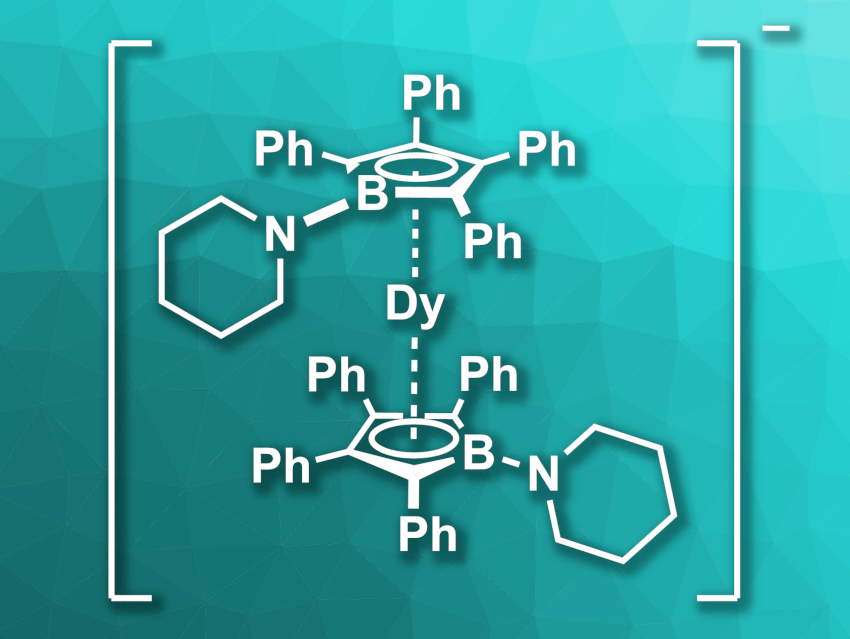Single-molecule magnets (SMMs) could be useful, e.g., for high-density data storage or next-generation technologies such as quantum computers. Lanthanide-based SMMs—in particular, double-decker complexes—are promising and can provide large energy barriers for the relaxation of magnetization. Lanthanide-based SMMs with Ln3+ ions are particularly interesting because Ln3+ ions have intrinsically strong anisotropic electron densities. They can be further tuned by choosing an appropriate ligand field.
Michael Nippe, Texas A&M University, College Station, USA, and colleagues have synthesized an aminoborolide ligand and used it to build an SMM, i.e., an anionic homoleptic Dy3+ sandwich complex (pictured). The team first synthesized 1-piperidino-2,3,4,5-tetraphenylborole via a reaction of piperidino(dichloro)borane with dilithiotetraphenylbutadienide. This borole was then reduced with potassium graphite (KC8) to give [K(THF)]2[1-(piperidino)-2,3,4,5-tetraphenylborolide], which contains the desired anionic ligand. A salt metathesis reaction was then used to prepare the complex [K(THF)6][1-(piperidino)-2,3,4,5-tetraphenylborolyl]2Dy, and [2.2.2]-cryptand was added to obtain the more stable [K(2.2.2)][1-(piperidino)-2,3,4,5-tetraphenylborolyl]2Dy as a single-molecule magnet.
The dianionic borolide ligands exert strong ligand fields on the trivalent lanthanide ion, resulting in high magnetic anisotropy. The SMM has a high blocking temperature (the temperature below which a material shows slow relaxation of magnetization) of 66 K and a comparatively large barrier for the reversal of magnetization. With these properties, the complex is among the best-performing SMMs reported so far, according to the researchers.
- A High-Performance Single-Molecule Magnet Utilizing Dianionic Aminoborolide Ligands,
James C. Vanjak, Branford O. Wilkins, Veacheslav Vieru, Nattamai S. Bhuvanesh, Joseph H. Reibenspies, Caleb D. Martin, Liviu F. Chibotaru, Michael Nippe,
J. Am. Chem. Soc. 2022.
https://doi.org/10.1021/jacs.2c06698



